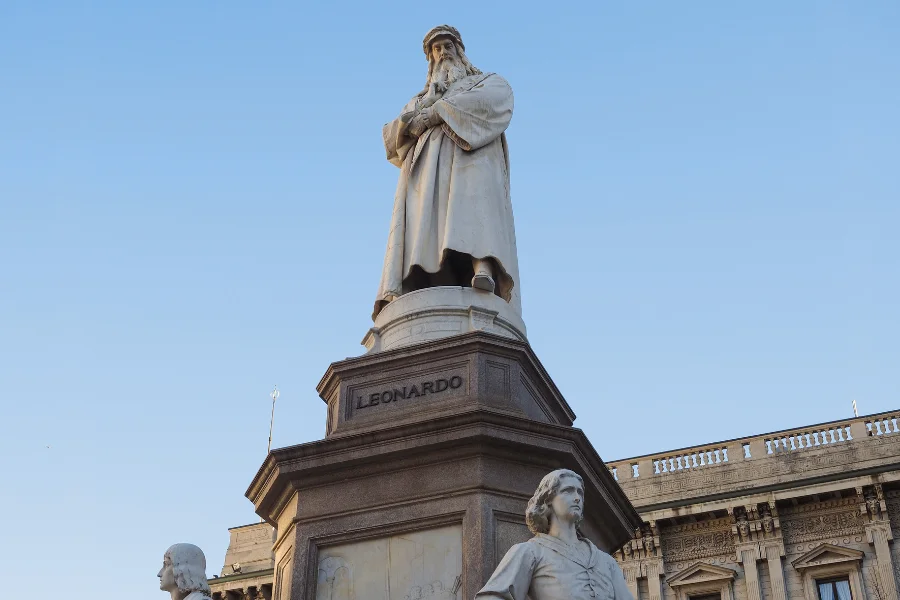
The statue of Leonardo da Vinci
Leonardo da Vinci was more than just an artist; he was also an inventor, scientist, mathematician, and a dedicated observer of the world around him. His lasting impact on multiple fields of study has etched his name into the annals of history as a figure of timeless significance.
Before we delve into the interesting Leonardo da Vinci Facts, it’s essential to understand where his story began.
Where was Leonardo da Vinci born?
This question takes us back to Vinci, Italy, where his story starts. As we explore his life, we will uncover the facts about him and examine the various aspects that shaped his life and work.
From discovering Leonardo da Vinci’s interesting facts about his life to learning about his significant achievements and their impact on the world, our exploration of Leonardo’s life will leave no stone unturned.
We will also uncover his personal life, including questions like “Was Leonardo da Vinci married?” and explore the circumstances surrounding his Leonardo da Vinci death.
10 Interesting Facts about Leonardo da Vinci
- Leonardo da Vinci Age: Leonardo was born on April 15, 1452, and died on May 2, 1519. He was 67 at the time of his death, a significant age considering the average life expectancy of his time.
- Leonardo da Vinci Scientist: Leonardo was a gifted artist and an innovative scientist. His scientific studies included anatomy, geology, botany, and even aeronautics, showcasing his diverse interests.
- Leonardo da Vinci Childhood: Leonardo was an illegitimate child born to a local notary, Piero da Vinci, and a peasant woman named Caterina. Despite his illegitimate status, he received an informal Latin, geometry, and mathematics education.
- Leonardo da Vinci Siblings: Leonardo had 17 half siblings from his father’s side, but none shared both parents.
- Leonardo da Vinci Accomplishments: Among his countless accomplishments, Leonardo is best known for his iconic works, “The Last Supper” and “Mona Lisa.” He also significantly contributed to various scientific fields, showing his multidimensional genius.
- Leonardo da Vinci Wife: Despite numerous depictions of women in his artworks, Leonardo never married nor had known romantic relationships, leading to much speculation about his personal life.
- Leonardo da Vinci Inventions: Leonardo’s inventive mind led him to designs far ahead of his time, such as a prototype for a helicopter, a tank, a catapult, and even a humanoid robot.
- Leonardo da Vinci Vegetarian: Leonardo was known to be a vegetarian and habitually bought caged birds to set them free.
- Which Painting by Leonardo da Vinci Was Left Unfinished When He Died? One intriguing fact about da Vinci is his habit of starting new projects before finishing the old ones. The Adoration of the Magi remained unfinished at the time of his death.
- Leonardo da Vinci Cause of Death: Leonardo da Vinci’s death was believed to have been caused by a stroke. He died in France in the arms of King Francis I, a patron and admirer of his work.
The Early Life of Leonardo da Vinci
Peering into Leonardo da Vinci’s early life, we discover a fascinating narrative marked by humble beginnings, unique family dynamics, and an inherent talent that predated his fame.
Leonardo da Vinci Childhood
Leonardo was born in the small Italian town of Vinci, hence his moniker ‘da Vinci,’ meaning ‘of Vinci.’ His childhood was somewhat unconventional. As the illegitimate son of a local notary and a peasant woman, he was raised by his father, Piero da Vinci, and his stepmothers following his mother’s marriage to another man.
Despite not receiving a formal education, Leonardo’s intellectual curiosity was evident from an early age. His fascination with the natural world around him was a precursor to his later scientific investigations. From a young age, he began filling his notebooks with observations and sketches, a practice he continued throughout his life.
Leonardo da Vinci Parents
Leonardo’s father, Piero da Vinci, was a notary, while his mother, Caterina, was a peasant woman. Although illegitimate, Leonardo was not shunned by his father and was raised in his household.
Piero married four times, leaving Leonardo with as many as 17 half-siblings. However, none shared both parents with Leonardo, making his family dynamics complex.
Leonardo da Vinci Before He Rose to Fame
Before Leonardo became the iconic figure we know today, he was an apprentice in the workshop of the renowned artist Andrea del Verrocchio in Florence. This period played a crucial role in shaping Leonardo’s artistic style.
During this time, he honed his painting, sculpture, and mechanical arts skills. Interestingly, one da Vinci fact suggests that Leonardo’s talent was so evident that Verrocchio decided to stop painting after seeing his work on “The Baptism of Christ.”
Thus, even before he gained widespread recognition, Leonardo was a curious and talented individual, eager to explore the world around him and express it through his art and scientific observations.
The Significant Contributions of Leonardo da Vinci
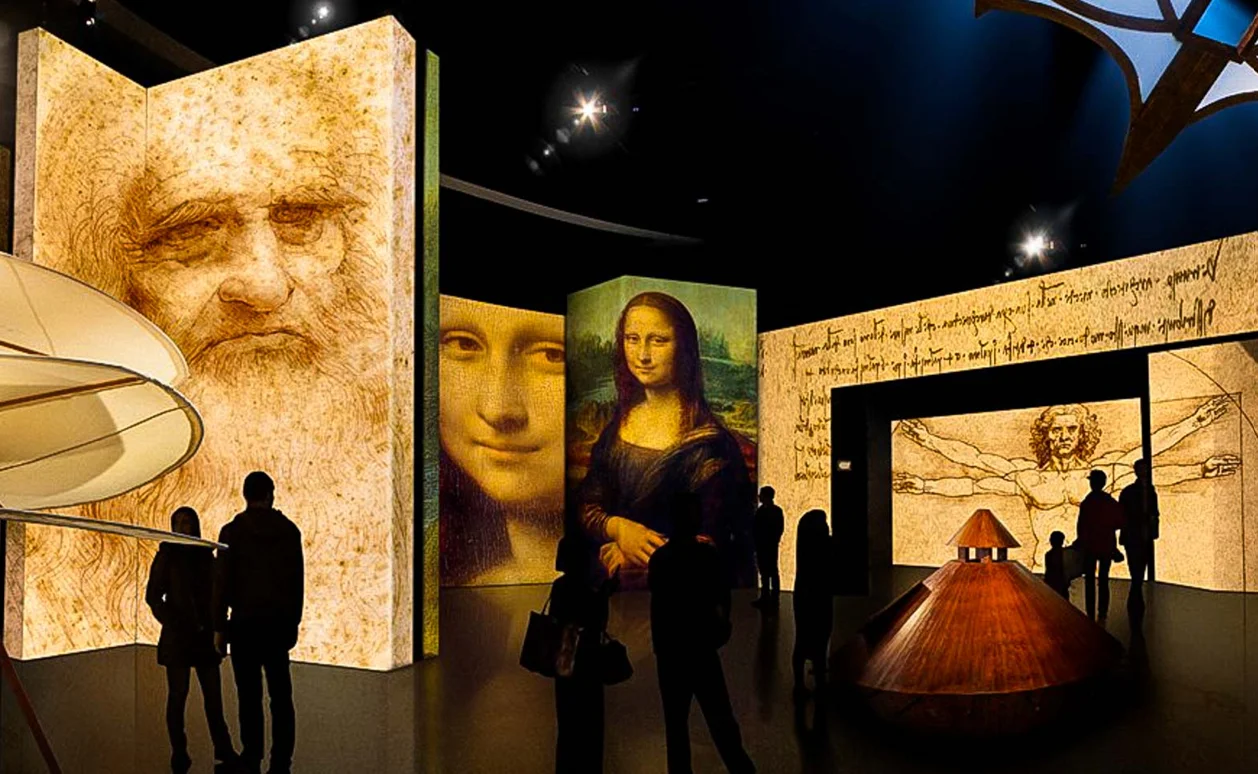
Leonardo da Vinci Museum in Florence, Italy
Leonardo da Vinci’s contributions have left a lasting legacy, from groundbreaking artwork to innovative scientific studies and inventions. Below are four key achievements that highlight Leonardo’s multidimensional genius.
- Mona Lisa
- Considered one of Leonardo’s most iconic works
- Famous for its unmatched realism and the subject’s enigmatic smile
- Notable for its atmospheric illusionism
- Prime attraction at the Louvre Museum in Paris
- Anatomical Studies
- Conducted in-depth anatomical studies by dissecting human bodies
- Gained insights into human structure
- Created comprehensive drawings and observations of skeletal structures, cardiovascular systems, and a fetus in utero
- Groundbreaking work is still referenced in modern medical studies
- The Last Supper
- Another masterful artwork by Leonardo
- Renowned for its perspective and emotional narrative
- Painted on the dining hall wall of Milan’s Convent of Santa Maria delle Grazie
- Portrays the moment when Jesus announced one disciple’s impending betrayal
- Captures the reactions of each individual with unprecedented detail
- Inventions
- Demonstrated Leonardo’s inventive spirit through designs for machines and devices
- Designs included a flying machine (similar to a helicopter), a parachute, a tank, a car, and a quickly assembled and disassembled bridge
- Though not brought to life during his time, these designs showcased his forward-thinking nature
These four achievements only touch the surface of Leonardo’s contributions. His multifaceted genius left an indelible mark on art, science, and invention, etching his name in the annals of human history.
Mystery of the Mona Lisa
Leonardo da Vinci’s Mona Lisa is shrouded in mystery—not only because of her enigmatic smile but also because of a surprising historical event. Explore this intriguing episode and touch upon some of Leonardo’s other remarkable works.
Disappearance and Recovery of the Mona Lisa
An interesting Leonardo da Vinci fact is related to the most famous painting in the world—the Mona Lisa. This captivating piece of art has been missing for many years.
In 1911, the Mona Lisa was stolen from the Louvre Museum by Vincenzo Peruggia, an Italian handyman who believed it belonged in Italy. The painting was absent from the museum’s walls for over two years, leading to an intense manhunt.
The painting was eventually recovered in 1913 when Peruggia attempted to sell it to an art dealer in Florence. This led to the restoration of the masterpiece to the Louvre, where it has remained ever since, drawing millions of viewers annually. This fascinating Mona Lisa missing chapter intrigues Leonardo’s most famous painting.
Exploring Other Artworks by Leonardo da Vinci
Leonardo’s artistic oeuvre extends far beyond the Mona Lisa. His other notable works include “The Salvator Mundi”,” “The Baptism of Christ”,” “Leda and the Swan”,” “The Annunciation”,” and “Lady with an Ermine. ” Each is groundbreaking in its own right and contributes to Leonardo’s lasting artistic legacy.
Leonardo da Vinci’s artistry inspires and captivates, demonstrating his timeless genius and unmatched talent.
The Impact of Leonardo da Vinci
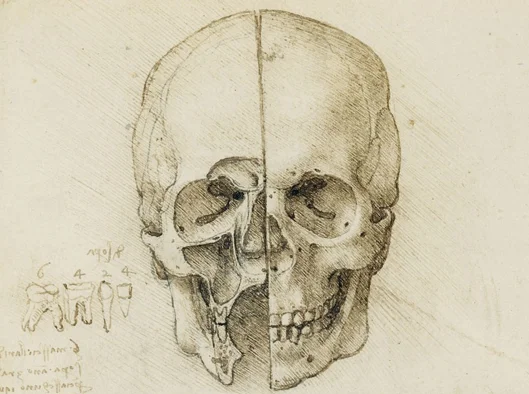
The Skull Sectioned (1489), One of The Leonardo’s Anatomical Studies
Leonardo da Vinci’s impact on the world extends beyond art to science, engineering, anatomy, and many other fields. His significance is rooted not just in his achievements but also in the ways his work has influenced subsequent generations.
- Unprecedented Contributions to Art: Leonardo revolutionized the field of art with his innovative techniques and concepts. His masterpieces, such as the Mona Lisa and The Last Supper, introduced new levels of realism and depth in portraying human emotions, changing the course of art history. His subjects’ unique and nuanced expressions demonstrated an understanding of human psychology far ahead of his time.
- Pioneering Work in Science and Anatomy: Leonardo’s curiosity extended into science and anatomy. His anatomical sketches showed remarkable detail and precision, demonstrating a deep understanding of the human body. He extensively researched the body’s skeletal and muscular systems and organ functions and even ventured into embryology. His work laid the foundations for modern anatomy and remains relevant to the medical field.
- Visionary Inventions and Engineering Designs: As an inventor, Leonardo sketched designs for machines and devices that were centuries ahead of their time. His visionary ideas, encompassing military machines, flying devices, and civil engineering, inspire modern technologies. Though many of his designs were not constructed in his lifetime, they display his unique ability to integrate art, science, and technology.
Leonardo’s diverse talents and ability to seamlessly blend science, art, and engineering make him a pivotal historical figure. He embodies the ideal of the “Renaissance man” – a person of unquenchable curiosity and feverishly inventive imagination. Leonardo’s work and ideas continue to inspire and influence various fields, cementing his importance in human history.
Personal Life of Leonardo da Vinci
Leonardo da Vinci, the man behind numerous interesting facts, led a life as unique and captivating as his art.
Was Leonardo da Vinci Married?
Leonardo da Vinci was a man of many facets, but one role he did not play in his lifetime was that of a husband. Thus, the answer to the question, “Was Leonardo da Vinci married?” is no.
Despite various speculations and rumors that have emerged over the centuries, no historical evidence suggests that Leonardo ever married or had children. His personal life was as enigmatic as his artistic endeavors, often shrouded in mystery and left open to interpretation.
Leonardo’s Relationships and Companions
Leonardo da Vinci was known to be sociable; throughout his life, he had many pupils and companions. He was generous and kind-hearted, often taking students to live and study in his studio.
One of the most notable of these pupils was Francesco Melzi, who became a close companion of Leonardo and inherited his artistic and scientific works, manuscripts, and collections after his death.
Despite the absence of a da Vinci wife or children, Leonardo’s relationships with his students, contemporaries, and patrons were rich and varied, offering insights into his humanistic values and his empathetic nature.
Leonardo da Vinci Portrait
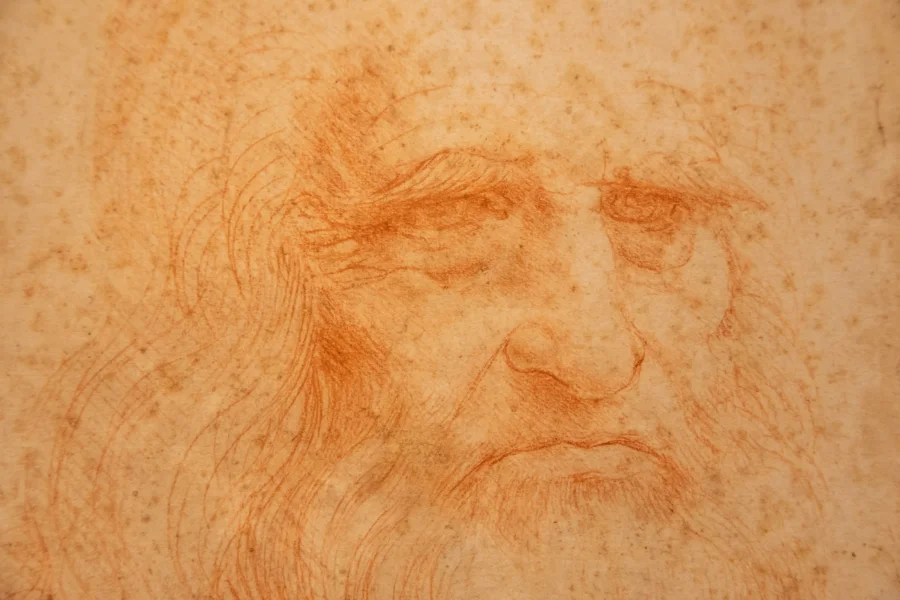
Leonardo da Vinci self-portrait
There are several portraits believed to be of Leonardo da Vinci.
- One of the most well-known is the so-called “self-portrait” in red chalk, housed in the Royal Library of Turin, Italy. This portrait is believed to be a self-portrait of Leonardo, drawn in his later years.
- Another famous portrait of Leonardo is the pen-and-ink drawing, often referred to as the “Monna Vanna,” which is held in the collection of the Uffizi Gallery in Florence, Italy. This drawing is believed to be of a young Leonardo, drawn around 1490.
- Leonardo’s posthumous portrait, by his student and companion Francesco Melzi, is held in the Biblioteca Reale in Turin, Italy. Some other portraits are also believed to be of Leonardo; however, their authenticity is debated among scholars.
The Final Years and Death of Leonardo da Vinci
Leonardo da Vinci, who encapsulated the term “Renaissance Man“ with his extensive contributions in various fields, lived a long and productive life.
We now focus on his final years and the circumstances surrounding his death, answering queries such as “How old was Leonardo da Vinci when he died?” and “What year did Leonardo da Vinci die?”
Leonardo da Vinci’s Final Years
The great master Leonardo da Vinci lived to the ripe old age of 67, an impressive age considering the average lifespan in the 16th century.
In his final years, he accepted an invitation from King Francis I of France, who provided Leonardo with the Clos Lucé manor house near the royal Château d’Amboise. Leonardo was free to dream, draw, think, and work in tranquility until his final days.
How Did da Vinci Die?
The cause of Leonardo da Vinci’s death cause is believed to have been a stroke. Leonardo da Vinci passed away on May 2, 1519, in the small town of Amboise, France.
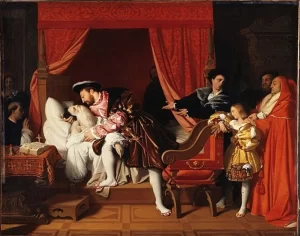
The Death of Leonardo da Vinci
There’s a captivating story about Leonardo’s death, which, while not verified, has become part of the da Vinci lore. It’s said that King Francis I was at Leonardo’s side when he died, cradling the artist’s head in his arms.
Whether or not this account is true, it certainly illustrates the respect and admiration that Leonardo commanded in his lifetime and continues to do so today.
Final Thoughts
We have traversed the complex, intriguing, and awe-inspiring life journey of Leonardo da Vinci, the unparalleled Renaissance genius. His remarkable achievements spanned art, science, and invention, making him a true polymath.
We have also discussed some interesting facts about Leonardo da Vinci and explored the details of his life before fame, significant contributions, and personal life.
Even centuries after his death, da Vinci’s work inspires, instructs, and amazes. His inventions, many of which were far ahead of their time, bear testament to a mind that always looked forward, dreamed big, and never ceased to ask questions.
Leonardo da Vinci’s artistic contributions, notably the enigmatic Mona Lisa, remain unsurpassed in their execution, technique, and universal appeal. Though lesser known, his scientific investigations were equally groundbreaking, reflecting his incessant curiosity and meticulous observation.
Leonardo da Vinci was not just a man of his time but a man of all times. His work transcends boundaries and continues to impact various disciplines even today.
Truly, Leonardo da Vinci embodies the ceaseless quest for knowledge, the courage to imagine the impossible, and the sheer joy of creation. His life offers us innumerable interesting facts about him.
Still, perhaps the most inspiring one is this: In his life and work, Leonardo da Vinci exemplified the limitless potential of the human mind.
 Leonardo Bianchi,
the creator of Leonardo da Vinci's Inventions.
Thank you for visiting
Leonardo Bianchi,
the creator of Leonardo da Vinci's Inventions.
Thank you for visiting